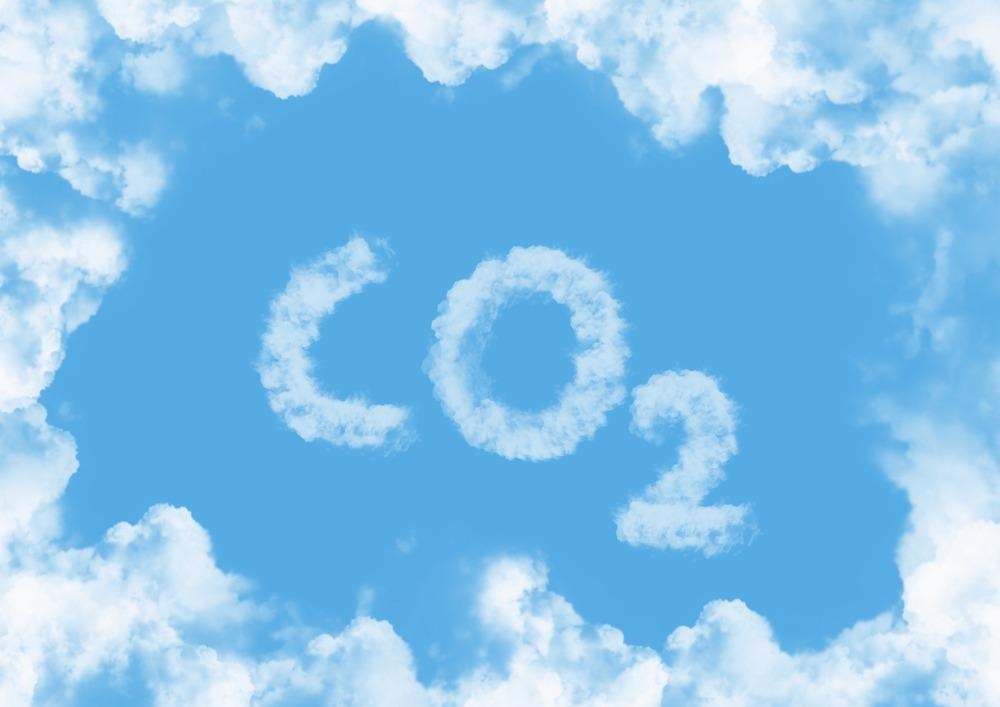In a study available as a pre-proof in the Journal of Membrane Science, a metal organic framework (MOF) transportation channel for carbon dioxide (CO2) with minimal impedance was built in a mixed matrix membrane (MMM) with the help of electrospun nanoscale fibers.

Study: PAN electrospun nanofiber skeleton induced MOFs continuous distribution in MMMs to boost CO2 capture. Image Credit: Horth Rasur/Shutterstock.com
Capturing CO2 with Metal Organic Frameworks
Carbon dioxide, being a major greenhouse gas and a significant resource of carbon, has proven difficult to absorb, harness, and store for sustainable usage.
Compared to classic CO2 extraction techniques such as cryogenic isolation, pressure swing adsorption, and so forth, the membrane separation technique offers a superior potential in capturing CO2 due to its higher efficiency, ease of pairing, and cheap cost, among other advantages.
Among the numerous kinds of CO2 separation screens, mixed matrix membrane (MMM) with synthetic material dispersion in a polymeric matrix is predicted to overcome the trade-off effect of polymeric membrane specificity and permeability.
Gas separating effectiveness in MMM is determined by the inherent characteristics of synthetic fillers and polymers, as well as their interface compliance.
In particular, the synthetic fillers supply gas molecules with extra adsorptive areas and preferred transport routes, allowing for both greater permeation and higher selectivity.
Metal organic frameworks (MOFs) are expected to offer MMM with good gas permeability, strong interface compliance, and hence greater gas selectivity because of their largely organic nature, high porosity, and simple function.
As a result, significant momentum has been achieved in developing MOF-based MMM for CO2 collection.
Issues Faced Due to Discontinuous Distribution of MOFs in Polymeric Matrices
Unfortunately, when specificity is kept constant, the carbon dioxide permeation of MOF-based MMM is merely 1-3x greater than that of conventional polymeric membranes. This figure is significantly lesser than that of a homogeneous MOF membrane.
The irregular dispersion of MOFs in the polymeric framework is primarily responsible for the poor carbon dioxide permeation of MOF-based MMM.
As a result, the passage of gaseous molecules through the barrier is short-circuited and continues to be controlled by the polymer. As a consequence, the elevated carbon dioxide permeability of MOFs is not completely reproduced, resulting in inadequate CO2 permeability augmentation.
If additional MOFs were introduced to the polymeric matrix, it would eventually produce a low-resistance CO2 transfer route across the membrane controlled by MOFs.
As a consequence, MMM's CO2 permeation might be considerably increased. However, when the quantity of MOFs used in MMM exceeds 30 wt%, it is possible to trigger aggregation of MOFs, resulting in poor compatibility among MOFs and polymeric matrix.
As a result, specificity flaws and even phase dissociation develop in MMM, drastically reducing selectivity. Therefore, building a steady and low-inhibition gas transporting route by increasing MOFs packing while maintaining selectivity is incredibly difficult.
Considerable attempts have been made to improve the interface compliance of MOFs with the polymeric matrix.
Although certain advances have been achieved in the construction of MOF transport pathways by boosting their loading, most techniques are not ubiquitous. Furthermore, in these investigations, MOFs were not completely consistent throughout the membrane.
It is critical to investigate a simple and universal technique for achieving continuous dispersion of MOFs in a polymeric matrix.
Important Findings of the Study
In this study, on-site polymerization of PEG within ZIF-8-based electrospun nanofibrous mats was used to create a new MMM with ZIF-8 constantly disseminated in polymeric matrix.
ZIF-8 particles developed steadily on the exterior of PAN nanofibers, and the quantity of ZIF-8 grew in proportion to the growing period. Gas adsorption rose as ZIF-8 content was increased, which was good for CO2 permeability.
The MMM was found to be thick and fault-free, according to the SEM pictures. Significantly, a long-distance and steady ZIF-8 transportation channel was generated across the barrier. Furthermore, the high Tg of ZIF-8@PAN-x/PEO MMM by differential scanning calorimetry (DSC) suggested that ZIF-8 and PEO have strong interface compatibility.
According to the gas separation findings, all of the ZIF-8@PAN-x/PEO MMMs had increased CO2 permeation but significantly decreased CO2/N2 selectivity when compared to the PAN/PEO NFM. This behavior was most likely caused by the PAN nanofibers' uninterrupted ZIF-8 transportation channel.
The ZIF-8@PAN-4/PEO MMM, in particular, had increased CO2 permeation as well as better CO2 selectivity over N2. This was because of the steady ZIF-8 transport channel and the high interface compatibility.
The current study demonstrates a unique and successful method for increasing the CO2 permeability of MOF-based MMM. In the future, porosity engineering of MOFs could allow selectivity to be fine-tuned even further.
Reference
Zheng, W., Li, Z., et al. (2022). PAN electrospun nanofiber skeleton induced MOFs continuous distribution in MMMs to boost CO2 capture. Journal of Membrane Science. Available at: https://www.sciencedirect.com/science/article/pii/S0376738822000783?via%3Dihub
Disclaimer: The views expressed here are those of the author expressed in their private capacity and do not necessarily represent the views of AZoM.com Limited T/A AZoNetwork the owner and operator of this website. This disclaimer forms part of the Terms and conditions of use of this website.